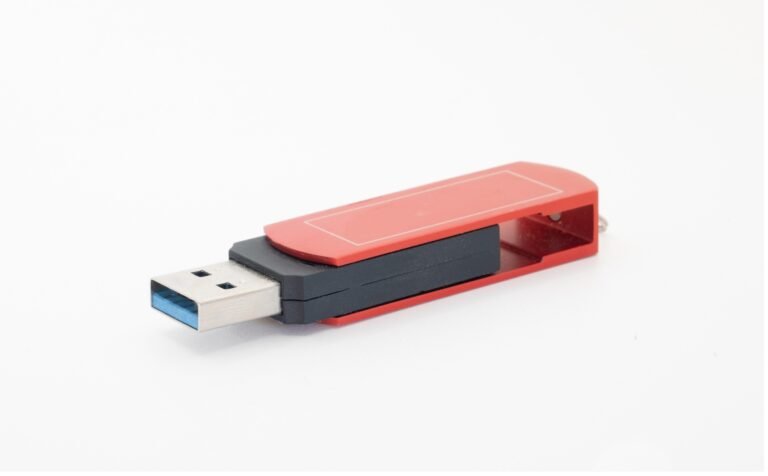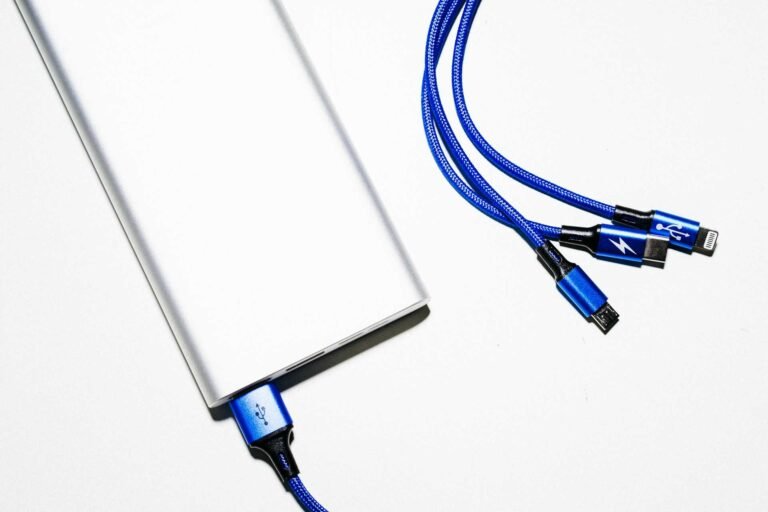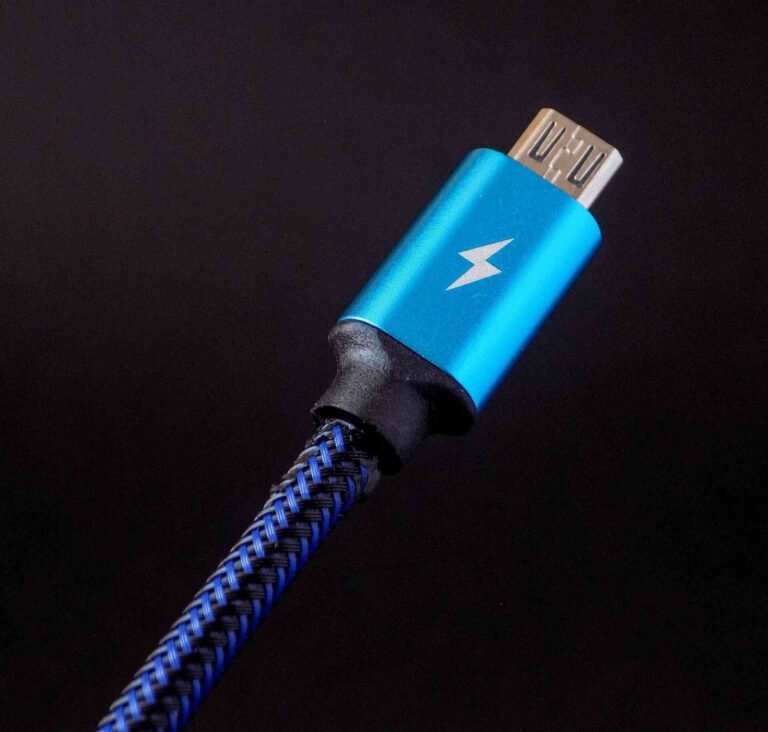External SSD vs USB Flash Drive: Which Is Better for Your Desk Setup?

Let’s be honest, choosing between an external SSD and a USB flash drive can feel like picking between a sports car and a bicycle when you just need to get from point A to point B. Both will store your files, but the experience? That’s where things get interesting.
Whether you’re backing up years of family photos, transferring massive work presentations, or just need something to carry your documents around, understanding the real differences between these storage options will save you from buyer’s remorse (and possibly some serious waiting time).
What Makes External SSDs and USB Flash Drives Different?
Think of it this way: if storage devices were coffee shops, USB flash drives would be your quick grab-and-go corner store, while external SSDs would be that premium café with the perfect ambiance and lightning-fast service.
External SSDs are essentially miniature versions of the solid-state drives that make modern laptops zippy. They use NAND flash memory arranged in a sophisticated controller system that manages data flow like a traffic conductor during rush hour. Most connect via USB-C or USB 3.0, giving them serious bandwidth to work with.
USB flash drives, on the other hand, are the humble workhorses we’ve all grown to love (and occasionally lose). They use similar flash memory technology but in a much simpler package. They’re designed for basic file storage and transfer, prioritizing portability and cost over raw performance.
The fundamental difference lies in how they handle data. External SSDs treat your files like VIP guests, whisking them through multiple memory channels simultaneously. USB flash drives are more like a single-file line at the grocery store – everything gets processed, but you’ll be waiting a while for large transfers.
Speed Showdown: Flash Drive vs External SSD Performance
Here’s where the external SSD vs flash drive debate gets spicy. We’re talking about the difference between watching paint dry and actually getting things done.
External SSD Speed Advantages:
- Sequential read speeds often exceed 500 MB/s (some hit 1,000+ MB/s)
- Random read/write operations happen almost instantly
- Large file transfers that would take 30 minutes on a flash drive finish in under 5 minutes
- Video editing directly from the drive becomes actually feasible
USB Flash Drive Reality Check:
- Most consumer flash drives max out around 100-150 MB/s for reads
- Write speeds often drop to 20-50 MB/s (ouch)
- Random access times can make your computer feel sluggish
- That 4K video you’re trying to copy? Time for a coffee break.
The performance gap becomes especially noticeable when you’re dealing with lots of small files. External SSDs handle random access like a seasoned multitasker, while flash drives treat each file request like they’re meeting it for the first time.
Storage Capacity: How Much Space Can You Actually Get?
Both options have come a long way from the days when 1GB felt infinite, but they’ve evolved differently.
USB Flash Drives:
- Sweet spot: 32GB to 128GB for most users
- Available up to 1TB or more (though prices get eye-watering)
- Perfect for documents, presentations, and moderate photo collections
- Cost per gigabyte remains attractive for smaller capacities

External SSDs:
- Commonly available from 250GB to 4TB
- Price per gigabyte becomes competitive around 500GB+
- Handle massive media libraries without breaking a sweat
- Better value for power users who need serious storage
The portable SSD vs flash drive capacity question often comes down to intended use. If you’re just shuttling Word documents and the occasional PowerPoint, a flash drive makes perfect sense. But if you’re a content creator, photographer, or someone who hoards digital memories like they’re going out of style, external SSDs offer breathing room.
Durability: Which One Survives Your Lifestyle?
Let’s talk about real-world durability, because we all know these things don’t live in padded cases.
External SSDs generally win the durability contest thanks to their lack of moving parts and more robust construction. They’re built to handle the occasional drop, though they’re not indestructible. The metal housing on many models provides better protection than the plastic shells common on flash drives.
USB flash drives have their own survival advantages. Their smaller size means they’re less likely to get damaged in bags, and the simpler construction means fewer things can go wrong. However, those tiny plastic housings can crack, and the connector is often the first thing to fail.
Both options handle temperature variations well, but external SSDs typically have better thermal management for sustained use. USB compatibility rarely becomes an issue with either option, though some newer external SSDs require USB 3.0 for optimal performance.
The Price Reality Check
Here’s where your wallet starts talking back to your ambitions.
USB flash drives remain the budget champion for basic needs. A decent 64GB drive costs less than lunch for two, while equivalent external SSD capacity runs significantly more. However, the price gap narrows considerably when you factor in performance per dollar.
External SSDs represent better long-term value for heavy users. Yes, the upfront cost stings more, but the time savings and enhanced productivity often justify the investment. It’s like buying quality tools, you pay once and benefit repeatedly.
The SSD vs USB drive pricing equation changes dramatically at higher capacities. A 1TB external SSD often costs only marginally more than a 1TB flash drive, but delivers exponentially better performance.
Comparison at a Glance
| Feature | USB Flash Drive | External SSD |
|---|---|---|
| Speed | 20-150 MB/s | 500-1000+ MB/s |
| Portability | Extremely portable | Very portable |
| Durability | Good for basic use | Superior construction |
| Best For | Documents, light use | Media, professional work |
| Power Usage | Minimal | Low but higher than flash |
This comparison shows why the flash drive vs portable SSD choice depends heavily on your specific needs and usage patterns.
Real-World Use Cases: When to Choose What
Choose a USB Flash Drive When:
- You primarily work with documents and small files
- Budget is the primary concern
- You need something truly pocket-sized
- USB compatibility across older systems matters
- You’re prone to losing small electronics (cheaper to replace)
Our Recommendation: SanDisk 128GB Ultra
Choose an External SSD When:
- You work with large media files regularly
- Time is literally money in your workflow
- You need reliable performance for professional tasks
- You’re backing up entire systems or large data sets
- You want to run applications directly from external storage
Our Recommendation: SAMSUNG T9 Portable SSD

The decision often comes down to how you value your time versus your money. If waiting for file transfers makes you want to reorganize your sock drawer, an external SSD pays for itself in preserved sanity.
Connectivity and Compatibility Considerations
Modern external SSDs typically offer USB-C connections with USB 3.0/3.1 speeds, though many include USB-A adapters for broader compatibility. This is where understanding what USB standards work together becomes crucial for your setup.
USB flash drives stick with the tried-and-true USB-A format, ensuring compatibility with virtually everything. However, this can create bottlenecks when connected to newer systems with faster ports.
For users with multiple devices requiring connections, the connector type becomes more important than you might initially think. Planning your connectivity needs prevents frustration later.
Security and Data Protection
Both storage types offer similar security features at the hardware level, but external SSDs often include better encryption options and management software. The real security difference lies in usage patterns.
Leaving devices permanently connected poses risks regardless of type, but external SSDs better handle constant connection scenarios due to superior thermal management and wear leveling.
Data longevity slightly favors external SSDs due to better error correction and wear management, though both technologies are reliable for typical consumer use.
Making Your Choice: The Bottom Line
The external SSD vs USB flash drive decision boils down to matching tool to task. Flash drives excel at being the digital equivalent of notepads: handy, affordable, and perfect for quick jobs. External SSDs are more like having a portable office, higher investment, but they transform how you work with data.
Consider your typical file sizes, how often you transfer data, and whether waiting bothers you. If you regularly move anything larger than a few gigabytes, or if you value your time highly, external SSDs quickly justify their cost.
For most people, the ideal solution involves both: a small flash drive for documents and emergency file transfers, plus an external SSD for serious storage needs.
Frequently Asked Questions
Are external SSDs worth the extra cost over flash drives?
For users who regularly transfer large files or work with media content, absolutely. The time savings and improved reliability typically justify the higher price within months of regular use. However, if you only occasionally move small documents, a quality flash drive serves perfectly well.
Can I use an external SSD for long-term backup storage?
Yes, external SSDs make excellent backup drives. They’re more reliable than traditional hard drives and much faster than flash drives for backup operations. Just ensure you’re not leaving them constantly connected unless necessary.
Do external SSDs work with older computers?
Most external SSDs include USB-A adapters or cables for compatibility with older systems. While you won’t get maximum speed on older USB 2.0 ports, they’ll still typically outperform flash drives on the same connection.
How much data can these storage options hold for real-world use?
Flash drives work well up to about 256GB for most users, while external SSDs shine from 500GB upward. Consider that modern smartphones often contain more data than older flash drives could hold, so plan accordingly for your actual storage needs.
Which option lasts longer with heavy use?
External SSDs generally outlast flash drives under heavy use due to better wear leveling and thermal management. However, both technologies are quite reliable for typical consumer applications.
Wrapping Up Your Storage Journey
Choosing between an external SSD and USB flash drive doesn’t have to feel like solving quantum physics. Think about how you actually use storage, consider what your time is worth, and remember that the best storage device is the one you’ll actually use effectively.
Whether you go with the speedy sophistication of an external SSD or the reliable simplicity of a USB flash drive, you’re getting access to more storage capacity and convenience than previous generations could have imagined. Just try not to lose it in your couch cushions.
The storage world keeps evolving, but the fundamental question remains: do you want to wait for your files, or do you want your files to wait for you? Your answer will guide you to the right choice.
Looking for more? Check out our tech utilities category for more articles and guides that may interest you!
Featured image credit: Photo by Samsung Memory on Unsplash
This content is for informational purposes only. Please verify current information directly on the retailer’s site before purchasing.






